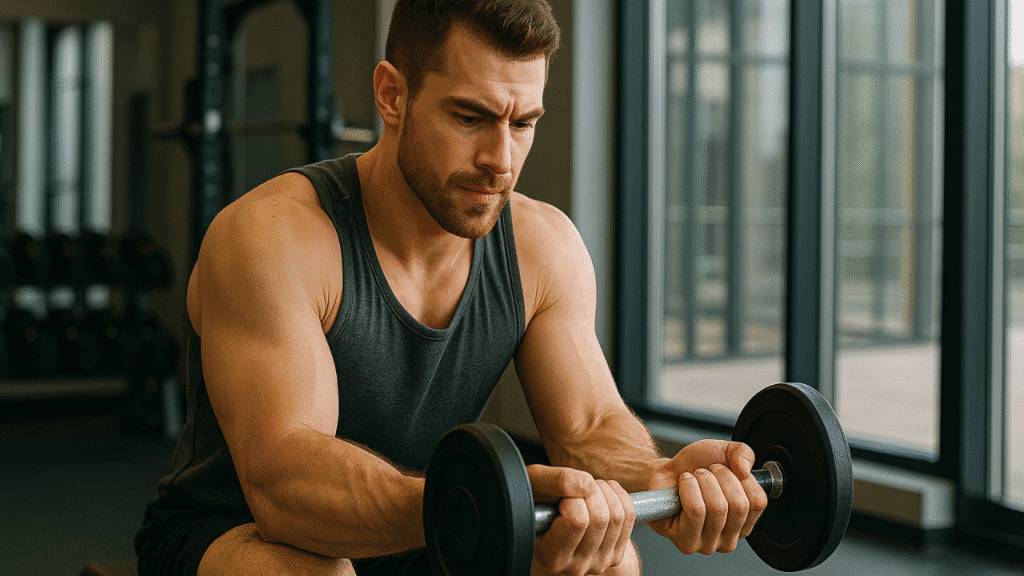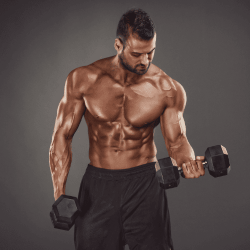How to Do Wrist Curls for Bigger Forearms

Forearms don’t just complete your physique—they tell the world you don’t skip the details. Whether you’re aiming to improve grip strength, enhance pulling power, or simply want those vascular, sleeve-busting forearms, wrist curls are a must. But most guys get them wrong. We’re breaking down how to do wrist curls properly, avoid the common pitfalls, and build forearms that look like they were carved out of granite.
Let’s pump up those forearms the right way.
1: UNDERSTANDING FOREARM ANATOMY
Before jumping into curls, let’s talk structure. The forearm is made up of two key muscle groups: the wrist flexors (on the inner side) and the wrist extensors (on the outer side). When you do wrist curls, you’re targeting those wrist flexors – the muscles responsible for flexing your wrist downward.
Why does this matter? Because knowing which muscles you’re targeting helps with mind-muscle connection and overall execution. Strong wrist flexors support grip strength, boost deadlift performance, and reduce the risk of elbow injuries.
So next time you’re curling that bar, remember: you’re sculpting the foundation of powerful arms.
2: EQUIPMENT YOU NEED
You don’t need a fancy gym to build serious forearms. Here are your basic tools:
Flat bench or even your knees for support
Wrist roller (optional but awesome)
Barbells allow you to load heavier, but dumbbells let you isolate each arm to fix imbalances. If you’re training at home, even a backpack filled with books can work in a pinch.
Grip strength accessories like Fat Gripz can also elevate the challenge. Go light at first—trust me, wrist curls burn faster than you think.
3: HOW TO DO SEATED WRIST CURLS (PROPER FORM)
Here’s your go-to move:
Sit on a bench and place your forearms on your thighs, palms up.
Let your wrists hang just beyond your knees.
Hold a barbell or dumbbells with a supinated grip.
Lower the weight slowly, letting your wrists extend fully.
Curl the weight back up by flexing your wrists. Squeeze at the top.
Lower with control. Repeat.
Key pointers:
Keep forearms flat; don’t lift them off your legs.
Don’t bounce the weight.
Controlled tempo = maximum gains.
4: STANDING BEHIND-THE-BACK WRIST CURLS
This is an underrated beast:
Grab a barbell with palms facing away.
Stand tall, arms behind your back, barbell hanging.
Let your wrists drop, then curl the bar upward using just your wrists.
It’s an excellent variation for people who want to hit the flexors from a different angle. It also forces you to isolate better since your arms are locked.
Don’t go too heavy on this one. Focus on control and squeeze at the top.
5: REVERSE WRIST CURLS FOR BALANCE
You can’t only train the flexors! Neglecting the extensors leads to imbalance and even elbow pain.
To do reverse wrist curls:
Same position as seated wrist curls, but palms face down.
Curl the weight upward using wrist extension.
Lower slowly, under control.
Start light. Reverse wrist curls burn fast and build that balanced, powerful forearm aesthetic.
6: WRIST CURLS WITH DUMBBELLS VS. BARBELL
So which is better?
Barbell curls allow heavier loads and symmetrical development. But dumbbells let each wrist move independently, which helps fix imbalances and increase range of motion.
Beginners should start with dumbbells to lock in technique. Then gradually incorporate barbell for volume and strength.
Use both if possible — each has its own unique advantages.
7: COMMON MISTAKES TO AVOID
Let’s fix what most lifters do wrong:
Using too much weight: Ego lifting ruins form.
Short range of motion: You’re cheating yourself.
Bouncing the reps: No control = no gains.
Neglecting extensors: Recipe for tendonitis.
Not training grip: Forearms aren’t just curls.
Keep your form clean, your reps slow, and your weight moderate. That’s how you build muscle without pain.
8: HOW TO STRUCTURE YOUR FOREARM WORKOUT
Add forearm work 2-3 times a week, especially if you’re not getting enough volume from compound lifts.
Example forearm finisher:
Seated Wrist Curls: 3×15-20
Reverse Wrist Curls: 3×15-20
Behind-the-Back Wrist Curls: 2×15
Farmer’s Carries: 2×30 seconds
Rest 30-60 seconds between sets. Prioritize form over weight.
Forearms recover quickly, so feel free to hit them frequently.
9: ADVANCED TIPS FOR MAXIMUM GAINS
Once you’ve mastered the basics, upgrade your game:
Use tempo (3-1-1 or 4-0-2)
Add isometric holds at the top
Train grip separately (fat bars, hangs, pinch holds)
Try wrist roller circuits
Advanced lifters can superset wrist curls with reverse curls to blast the entire forearm in minimal time.
Remember: the burn is your friend. Chase it.
10: RECOVERY, STRETCHING & LONG-TERM GROWTH
Forearms take a beating, so recovery matters.
Post-training tips:
Stretch wrists (flexor and extensor stretches)
Use massage balls or forearm rollers
Don’t train through pain
Eat and sleep like a bodybuilder
Growth happens during recovery. Stretch those forearms daily and hydrate to flush out lactic acid.
Long-term? Stay consistent, progressive, and patient.
You don’t need elite genetics to build crazy forearms—just proper form, consistent effort, and smart programming.
Wrist curls are the foundation, but combine them with compound lifts, grip training, and a bit of fire in your veins, and you’ll be rocking forearms that turn heads.
Men’s trending fashion and how to look attractive. Here teaching fashion, so make sure to check it out.
Men’s Fitness tips, what you eat and how to stay fit your body. The best workout and best diet plan, so make sure to check it out.
Men’s lifestyle tips, how to live a better life, and changing your lifestyle tips, so make sure to check them out.
It cannot be denied that men have finally come to their senses when it comes to good grooming and fashion statement.
Men are also equally frustrated with bad hair days in their life, even though not as annoyed as women. Even though men have short haircuts, they also face problems in maintaining their hair.
There are no formulae for success but there are some successful entrepreneur tips that can help make things a little simpler.









